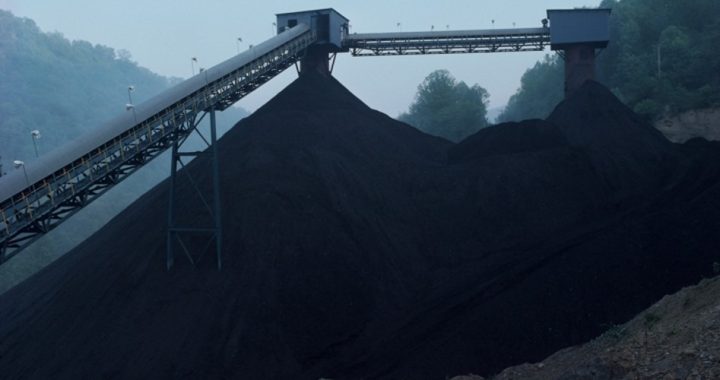
On Wednesday, Peabody Energy Company, the world’s largest private-sector coal company, announced that it was going to miss making $70 million in interest payments simply because it didn’t have the money. This was not just a temporary lack of cash flow, but indicative of existential problems:
As a result of … the continued uncertainty around global cost fundamentals, the stagnated economic growth of certain major coal-importing nations, and the potential for significant additional regulatory requirements imposed on coal producers … there exists substantial doubt whether we will be able to continue as a going concern.
Regarding the third reason given by Peabody, increased regulations, U.S. coal producers have for the past seven years faced regulatory threats as the environmental movement and its allies in the Obama administration, persuaded that man-made global warming is threatening the human race with extinction, have pressured coal producers to cut emissions. The administration has largely ignored the reduction in those allegedly dangerous greenhouse gases, which has come about thanks to fracking and cheap natural gas. Instead of pressing forward in the implementation of its standards announced in the summer of 2014, Obama and his EPA decided to double down, and raised the emissions requirements even higher.
Those requirements, as President Obama announced last August, would require states to cut emissions by 32 percent below those recorded in 2005 and have the job done by 2030. But the regulations require the states to have in place the regulatory mechanisms by no later than 2017 or else the EPA would come into each recalcitrant state and make the regulations itself.
Obama delighted his audience last August when he announced the new EPA regulations:
Now, not everyone here is a scientist … but some of you are among the best scientists in the world. And what you and your colleagues have been showing us for years now is that human activities are changing the climate in dangerous ways. Levels of carbon dioxide, which heats up our atmosphere, are higher than they’ve been in 800,000 years….
With this Clean Power Plan [CPP], by 2030, carbon pollution from our power plants will be 32 percent lower than it was a decade ago. And the nerdier way to say that is that we’ll be keeping 870 million tons of carbon dioxide pollution out of our atmosphere. The simpler, layman’s way of saying that is it’s like cutting every ounce of emission due to electricity from 108 million American homes. Or it’s the equivalent of taking 166 million cars off the road.
It’s also equivalent to ending more than 125,000 jobs and reducing the country’s gross domestic product by $650 billion over the next ten years, according to the American Action Forum, but the president didn’t mention that.
During a speech last fall, however, Hillary Clinton did mention it, and her solution: $30 billion of new taxpayer funds, which would bail out the United Mine Workers pension plan and then put those terminated workers in make-work jobs building high-speed broadband facilities, roads, bridges, water systems, airports, public health centers, and renewable energy facilities. As the Wall Street Journal put it: “Here we have the progressive policy … made clear: First destroy coal jobs to please affluent liberals over climate change [and] then tax all [other] Americans more to buy the support of the workers who had those jobs.”
Separately, the Wall Street Journal decried the takeover by the federal government of state power, calling Obama’s declaration “raw willfulness,” an “abuse of power,” and “regulation without representation.” The editors saw through the rhetoric, calling the EPA rules an attempt to “usurp” states’ responsibilities in regulating energy producers in order to “nationalize power generation and consumption.”
The Journal called on the states to refuse to cooperate: “The Clean Air Act is a creature of cooperative federalism and Governors have no obligation to craft a compliance plan. The feds will try to enforce [their rules] but they can’t commandeer the states, and they lack the money, personnel and bandwidth to overcome a broad boycott [by the states]. Let’s see how much ‘clean power’ the EPA really has.”
It hasn’t come to that, at least not yet. Ten days after the final rule was announced, 27 states petitioned the United States Court of Appeals for the District of Columbia for an emergency stay, arguing that the EPA overstepped its authority in issuing the CPP. In an extraordinary move, the Supreme Court demanded on February 9 that the EPA halt its enforcement of its mandate until the lower court hears the suit. This is the first time the Supreme Court stayed a regulation before a judgment by the lower Court of Appeals. That means that for all practical purposes, implementation of the EPA’s draconian mandates to shift energy production from coal to “green” are on hold until after the November election.
Unfortunately for Peabody Energy, that is small comfort. In the last year, its stock has declined from $99.90 a share to $2.05 a share as investors are bailing out en masse in expectations that the company will soon cease to exist.
If elected, Hillary Clinton has vowed to continue the Obama legacy of ending the coal industry altogether in favor of so-called clean industries such as wind and solar.
What is ironic is that natural gas is continuing to accomplish what the EPA says it wants: cutting emissions massively through free-market operations. That the EPA is oblivious to that fact merely proves once again that the agency’s real purpose has little to do with a cleaner environment but much more to do with gaining federal power and control over energy production and consumption in the United States.
A graduate of an Ivy League school and a former investment advisor, Bob is a regular contributor to The New American magazine and blogs frequently at LightFromTheRight.com, primarily on economics and politics. He can be reached at [email protected].



